-
 Bitcoin
Bitcoin $114800
-3.31% -
 Ethereum
Ethereum $3641
-5.84% -
 XRP
XRP $2.948
-6.36% -
 Tether USDt
Tether USDt $0.9998
-0.03% -
 BNB
BNB $772.4
-3.97% -
 Solana
Solana $169.1
-6.68% -
 USDC
USDC $0.9999
-0.01% -
 Dogecoin
Dogecoin $0.2056
-8.09% -
 TRON
TRON $0.3247
-0.18% -
 Cardano
Cardano $0.7239
-7.43% -
 Hyperliquid
Hyperliquid $39.71
-8.60% -
 Stellar
Stellar $0.3912
-7.84% -
 Sui
Sui $3.510
-10.17% -
 Chainlink
Chainlink $16.59
-8.03% -
 Bitcoin Cash
Bitcoin Cash $560.5
-3.65% -
 Hedera
Hedera $0.2464
-10.08% -
 Avalanche
Avalanche $22.03
-7.87% -
 Ethena USDe
Ethena USDe $1.001
-0.02% -
 UNUS SED LEO
UNUS SED LEO $8.947
0.21% -
 Toncoin
Toncoin $3.389
-2.58% -
 Litecoin
Litecoin $104.9
-5.23% -
 Shiba Inu
Shiba Inu $0.00001220
-6.67% -
 Polkadot
Polkadot $3.652
-6.10% -
 Uniswap
Uniswap $9.213
-9.05% -
 Monero
Monero $307.2
-2.93% -
 Dai
Dai $0.9998
-0.02% -
 Bitget Token
Bitget Token $4.367
-2.89% -
 Cronos
Cronos $0.1374
-6.80% -
 Pepe
Pepe $0.00001056
-8.65% -
 Aave
Aave $257.3
-7.31%
What does it mean when the KDJ fast line breaks through 80 and then goes sideways at a high level for three consecutive days?
When the KDJ %K line crosses above 80 and consolidates sideways for three days, it signals strong bullish momentum with potential exhaustion—caution is warranted.
Jul 30, 2025 at 08:15 pm
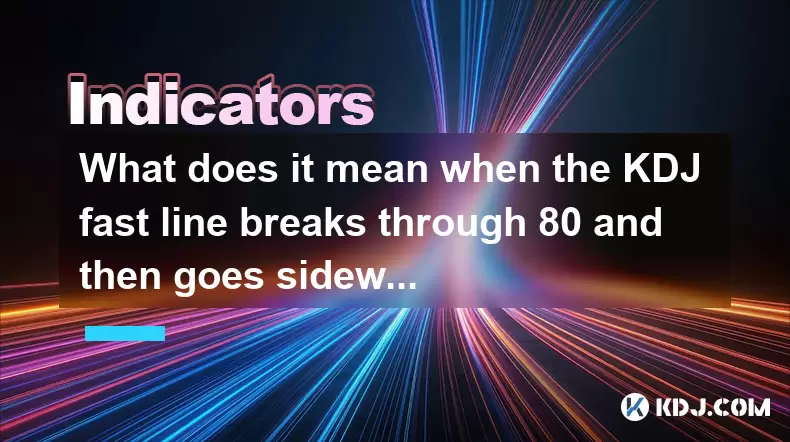
Understanding the KDJ Indicator in Cryptocurrency Trading
The KDJ indicator is a momentum oscillator widely used in cryptocurrency trading to identify overbought and oversold conditions. It consists of three lines: the %K (fast line), %D (slow line), and %J (divergence line). The %K line reflects the current closing price relative to the price range over a specified period, usually 9 days. The %D line is a moving average of %K, typically over 3 periods, and %J is derived from 3 × %K minus 2 × %D, amplifying volatility. Traders monitor these lines to anticipate trend reversals or confirm ongoing momentum. When analyzing cryptocurrency price charts, the KDJ helps detect potential exhaustion points in bullish or bearish trends.
Interpreting the Fast Line Crossing Above 80
When the KDJ fast line (%K) rises above the 80 threshold, it signals that the asset is entering overbought territory. In the context of cryptocurrency markets, which are highly volatile, this level often indicates strong upward momentum and aggressive buying pressure. However, exceeding 80 does not automatically mean a reversal is imminent. Many strong uptrends in digital assets like Bitcoin or Ethereum can sustain overbought conditions for extended periods. The key insight is that crossing 80 reflects heightened bullish sentiment, but it should not be interpreted in isolation. Confirmation from volume, price action, or other technical indicators is essential before making trading decisions.
Significance of Sideways Movement at High Levels
When the %K line breaks above 80 and then moves sideways for three consecutive days, it suggests a period of consolidation at elevated momentum levels. This pattern indicates that buying pressure remains strong, but the pace of the advance has paused. Instead of continuing to climb, the fast line stabilizes, which may reflect profit-taking by short-term traders while longer-term holders maintain their positions. In cryptocurrency markets, such behavior often occurs after sharp rallies, where volatility cools temporarily. The sustained presence above 80 implies that bullish momentum is still dominant, even if not accelerating.
What Three Consecutive Days of High-Level Consolidation Suggest
A three-day sideways movement of the %K line above 80 can be interpreted as a potential warning sign of an impending pullback or correction. The market may be building up energy for a directional breakout—either continuation or reversal. During this phase, traders should watch for:
- Volume trends: Declining volume during consolidation may indicate weakening enthusiasm.
- Price action: Narrow-range candles suggest indecision; long upper wicks may show rejection of higher prices.
- Divergence: If the price makes new highs but the %K line fails to rise further, it signals bearish divergence.
- %D line behavior: If the %D line begins to turn down while %K remains flat, it could foreshadow a bearish crossover.
This setup is particularly relevant in high-leverage crypto futures trading, where sentiment shifts rapidly.
Practical Steps to Respond to This KDJ Pattern
When you observe the KDJ fast line crossing 80 and consolidating sideways for three days, consider the following steps to manage risk and position effectively:
- Confirm with additional indicators: Use RSI (Relative Strength Index) to check if it also shows overbought conditions (above 70). A simultaneous overbought signal strengthens the cautionary signal.
- Monitor the 4-hour and daily charts: Ensure the pattern appears on multiple timeframes. A signal on both 4H and daily increases its reliability.
- Set trailing stop-loss orders: If you are in a long position, protect profits by adjusting stop-loss levels upward. For example, place the stop below the lowest candle of the consolidation period.
- Watch for bearish candlestick patterns: Look for shooting stars, bearish engulfing, or evening star formations at resistance levels.
- Avoid opening new long positions: Wait for the %K line to dip below 80 and re-enter from below, which could signal a healthier buying opportunity.
- Consider short-term profit-taking: If holding a large position, reduce exposure gradually rather than exiting all at once.
These actions help align your strategy with the evolving momentum and reduce exposure to sudden corrections.
How to Adjust Your Trading Strategy Based on KDJ Behavior
Adjusting your approach based on KDJ dynamics requires a structured plan. In fast-moving crypto markets, reacting too late or too early can lead to losses. When the %K line lingers above 80 for three days, shift from aggressive buying to defensive monitoring. Focus on risk management rather than new entries. Use grid trading bots to automate partial profit-taking at predefined levels. If you're using Binance, Bybit, or OKX, set up price alerts for when the %K line drops below 80 or when volume spikes abnormally. Integrate on-chain data (like exchange outflows or whale movements) to assess whether the overbought condition is supported by fundamental accumulation or just speculative frenzy.
Frequently Asked Questions
Q: Can the KDJ fast line stay above 80 for more than three days without a reversal?
Yes, especially during strong bull runs in cryptocurrencies. Assets like Solana or Dogecoin have shown %K lines staying above 80 for 5–7 days during parabolic moves. Extended overbought conditions often occur when FOMO (fear of missing out) drives continuous buying. The key is to assess whether volume supports the move and whether higher highs are still being made.
Q: What timeframes are best for observing this KDJ pattern?
The daily and 4-hour charts are most effective. The daily chart provides macro context, while the 4-hour allows for timely reaction. Lower timeframes like 15-minute charts generate too many false signals due to crypto volatility. Always cross-verify the pattern across at least two timeframes.
Q: Does this KDJ pattern work the same across all cryptocurrencies?
Not exactly. Major coins like Bitcoin and Ethereum tend to follow technical patterns more reliably due to higher liquidity. Low-cap altcoins with low trading volume may show erratic KDJ behavior due to whale manipulation or thin order books. Always consider market cap and trading volume when applying KDJ analysis.
Q: Should I sell immediately when the fast line goes sideways above 80?
No, selling immediately is not advised. Sideways movement at high levels is a caution signal, not a sell trigger. Wait for confirmation—such as a bearish crossover of %K and %D, a close below 80, or a breakdown in price support—before initiating exits. Premature selling can cause you to miss further upside in trending markets.
Disclaimer:info@kdj.com
The information provided is not trading advice. kdj.com does not assume any responsibility for any investments made based on the information provided in this article. Cryptocurrencies are highly volatile and it is highly recommended that you invest with caution after thorough research!
If you believe that the content used on this website infringes your copyright, please contact us immediately (info@kdj.com) and we will delete it promptly.
- Bitcoin, Ethereum, and Investor Behavior: A New York Minute on Crypto Trends
- 2025-08-01 15:10:12
- Tether's Q2 Triumph: USDT Supply Soars Amidst Profit Surge!
- 2025-08-01 15:10:12
- Ethereum ETF Holdings: A Corporate Treasury Revolution?
- 2025-08-01 15:30:12
- Ethereum's Wild Ride: Funding Rates, Price Drops, and Retail to the Rescue!
- 2025-08-01 15:30:12
- Ethereum Under Pressure: Crypto Market Drop Explained
- 2025-08-01 15:35:11
- Ethereum ETF Mania: Inflows Surge, Market Rises, What's Next?
- 2025-08-01 15:35:11
Related knowledge

What is the difference in KDJ signal interpretation between a trending and a ranging market?
Aug 01,2025 at 03:56pm
Understanding the KDJ Indicator in Cryptocurrency TradingThe KDJ indicator is a momentum oscillator widely used in cryptocurrency trading to identify ...

Does the KDJ indicator work well for low-liquidity crypto assets?
Aug 01,2025 at 02:01pm
Understanding the KDJ Indicator in Cryptocurrency TradingThe KDJ indicator is a momentum oscillator derived from the Stochastic Oscillator, widely use...
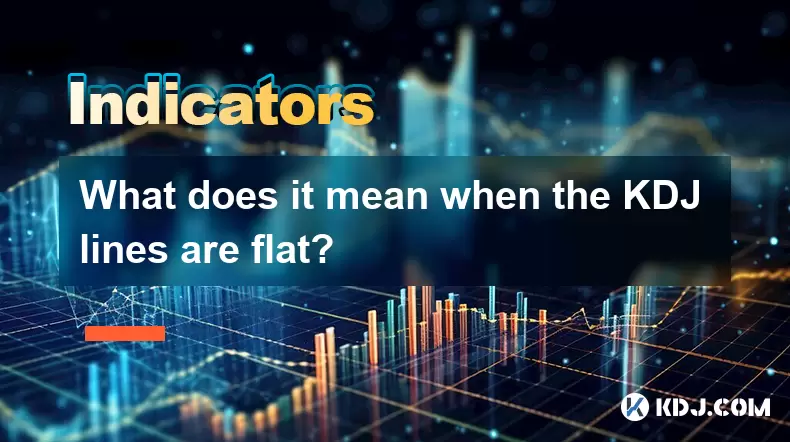
What does it mean when the KDJ lines are flat?
Aug 01,2025 at 03:22pm
Understanding the KDJ Indicator in Cryptocurrency TradingThe KDJ indicator is a momentum oscillator widely used in cryptocurrency technical analysis t...
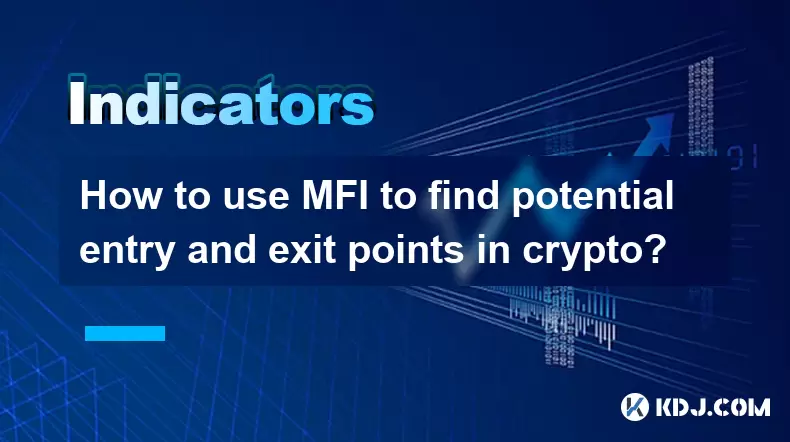
How to use MFI to find potential entry and exit points in crypto?
Aug 01,2025 at 02:35pm
Understanding the MFI Indicator in Cryptocurrency TradingThe Money Flow Index (MFI) is a momentum oscillator used to measure the strength and directio...
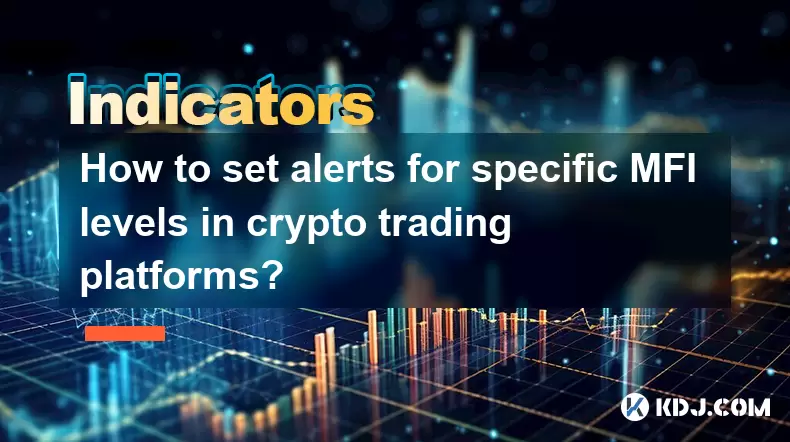
How to set alerts for specific MFI levels in crypto trading platforms?
Aug 01,2025 at 12:42pm
Understanding the Money Flow Index (MFI) in Crypto TradingThe Money Flow Index (MFI) is a momentum oscillator that measures the flow of money into and...
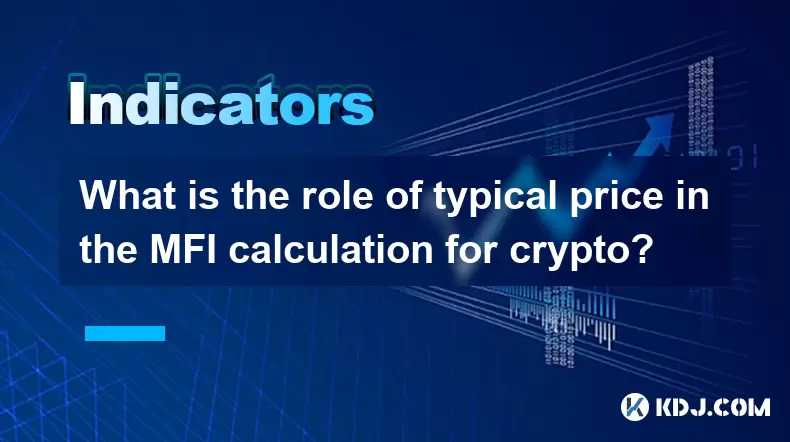
What is the role of typical price in the MFI calculation for crypto?
Aug 01,2025 at 12:21pm
Understanding the Typical Price in MFI for Cryptocurrency AnalysisThe Typical Price plays a crucial role in the calculation of the Money Flow Index (M...

What is the difference in KDJ signal interpretation between a trending and a ranging market?
Aug 01,2025 at 03:56pm
Understanding the KDJ Indicator in Cryptocurrency TradingThe KDJ indicator is a momentum oscillator widely used in cryptocurrency trading to identify ...

Does the KDJ indicator work well for low-liquidity crypto assets?
Aug 01,2025 at 02:01pm
Understanding the KDJ Indicator in Cryptocurrency TradingThe KDJ indicator is a momentum oscillator derived from the Stochastic Oscillator, widely use...

What does it mean when the KDJ lines are flat?
Aug 01,2025 at 03:22pm
Understanding the KDJ Indicator in Cryptocurrency TradingThe KDJ indicator is a momentum oscillator widely used in cryptocurrency technical analysis t...

How to use MFI to find potential entry and exit points in crypto?
Aug 01,2025 at 02:35pm
Understanding the MFI Indicator in Cryptocurrency TradingThe Money Flow Index (MFI) is a momentum oscillator used to measure the strength and directio...

How to set alerts for specific MFI levels in crypto trading platforms?
Aug 01,2025 at 12:42pm
Understanding the Money Flow Index (MFI) in Crypto TradingThe Money Flow Index (MFI) is a momentum oscillator that measures the flow of money into and...

What is the role of typical price in the MFI calculation for crypto?
Aug 01,2025 at 12:21pm
Understanding the Typical Price in MFI for Cryptocurrency AnalysisThe Typical Price plays a crucial role in the calculation of the Money Flow Index (M...
See all articles

























































































